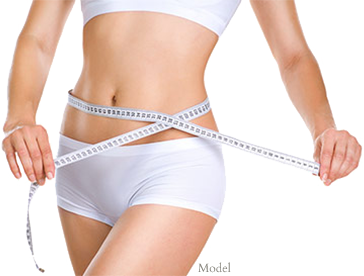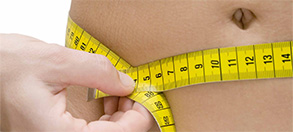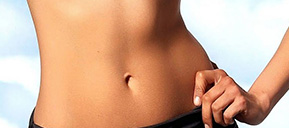People seem to be obsessed with the keto diet, but are there side effects? What foods are allowed? Here’s what you need to know about keto.
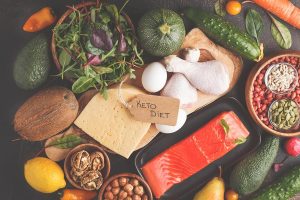
Keto was initially used to treat epilepsy in children and is still used today for those who don’t respond well to anti-seizure medication. It has also been used in adults, where weight loss was seen as a fortunate side effect.
The keto diet plan is both familiar and completely different, combining elements of other diets you’re undoubtedly familiar with. Let’s take a look at the theory behind keto, the possible benefits, and what being on the keto diet looks like.
What is the Keto Diet?
The ketogenic diet is a weight loss plan that advocates for low carb, very high fat, and moderate protein macronutrients. In some ways, keto is like Atkins, in that it calls for a low-carb lifestyle. Bacon cheeseburgers are acceptable, but eating the bun it came with is not.
Keto also shares similarities with the Mediterranean diet in that it includes lots of monounsaturated fats (like olive oil, nuts, and avocados). However, keto goes one step further in telling people to up their fat intake, regardless of the source. According to the keto diet, avocados are good, but butter isn’t necessarily bad.
The theory behind the low carb-high fat-moderate protein combination is that eating in this manner can force your body into a state called “ketosis,” which means your body is using fat as its main source of energy instead of carbs (as is the body’s normal state of operation).
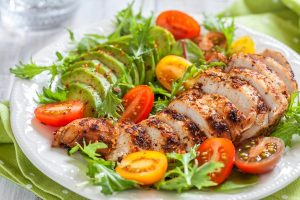
Enter: fat. In fact, this is actually why you can survive so long without eating — your body burns through its first choice of energy (sugar) and then it starts to burn fat. And let’s face it, most of us have enough fat to spare.
Your body is officially in ketosis when it begins turning fat into ketones (chemicals made by the liver) which are then sent to your bloodstream and used by your muscles and organs for energy in place of the carbs it’s really looking for.
When your body has more sugar than it needs, it takes that extra glucose and turns it into fat, which gets stored in every place you don’t want it: your hips, your stomach, your thighs, etc.
But if you’re sticking to the recommended macros, your body won’t have more glucose than it needs, which means it can’t store any. It will burn off the carbs and head straight for the fat. Advocates of a ketogenic diet like to say your body in ketosis a “fat-burning machine.”
The Benefits of the Keto Diet
Weight Loss
The most popular benefit (and motivator) of the keto diet is weight loss. Of course, one would hope, since people typically change their diets with the goal of losing weight. But as we know, the degree of weight loss is often exaggerated. The good news about the ketogenic diet is that people lose weight pretty consistently when they follow the guidelines.
Most people notice that cutting back on carbs helps them lose weight, so the basic premise of the keto diet seems to make sense. Less bread and fewer empty calories typically equals weight loss. Subbing broccoli in for a granola bar as your afternoon snack sounds like a pretty sensible way to cut back on carbs.
Curbing Your Appetite and Cravings
Many report that eating fewer carbs and increasing their fat and protein intake helps curb their appetites. This plays into the idea that refraining from eating foods you crave typically helps reduce cravings for that food.
For example, if you crave cheesecake and oftentimes order it for dessert when you go out to dinner, consider skipping it for a while and see how it affects your cravings (of course, not if you’re on the keto diet, as cheesecake has too many carbs).
It Could Help Lower Triglycerides and Increase Good Cholesterol
It seems counterintuitive that a high fat diet could decrease your triglycerides (TG), but there’s some research to show it works. There have been multiple studies at this point that demonstrate an increase in triglycerides when eating more carbohydrates. There is even some debate at this point as to recommending people sub out carbs for saturated fat — an idea many people will probably struggle to grasp after being told for decades that fat is terrible for you.
The same goes for your HDL (good) cholesterol. While researchers are still trying to figure out why exactly low-carb diets are better for cholesterol and TG, they’re mostly in agreeance that it consistently helps improve the HDL: TG ratio, thus decreasing the risk of heart disease.
Alleviating PCOS Symptoms
Women suffering from polycystic ovary syndrome (PCOS) may see a decrease in their symptoms through a ketogenic diet. More research is needed, but one pilot study found that participants lost weight, found a better hormone balance, and improved their fasting insulin.
Foods to Eat
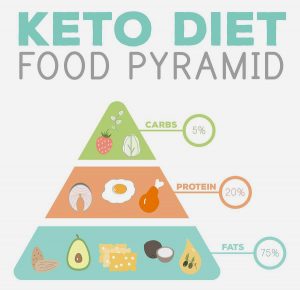
If you’re planning to try the ketogenic diet, know that it will take some getting used to. The main focus of keto is to keep your macros within the recommended limits, which means you’ll be consuming far more calories than you’re probably accustomed to. The recommended macros are:
- Fat: 60-75% of calories
- Protein: 15-30%
- Carbs: 5-10% (net, which means total carbs minus fiber)
Along those lines, here’s a list of keto-approved foods you can eat:
- Meat (wild-caught fish, grass-fed beef, poultry)
- Eggs
- Leafy Greens (spinach, kale, arugula, swiss chard)
- Avocados
- Olive and Coconut oil (as well as whole olives and coconuts)
- Nuts and seeds
- Full-fat dairy (milk, yogurt, cheese, cream, as well as butter)
- Non-starchy vegetables
- Berries
- Dark chocolate (which is mostly cocoa and has far less sugar than milk chocolate)
One of the most common findings among those who’ve tried the keto diet is that it’s legitimately difficult to eat enough fat to meet the 60-75% requirement. People have been known to add butter to everything, piling on the mayo (with lettuce wraps — no bun, of course), and even eating straight olive oil.
But keep in mind that butter does not equal olive oil on the healthy-scale, and there’s essentially no nutritional value to mayonnaise. Make sure you’re eating healthy fats, not just cream cheese on top of everything.
In addition, the guidelines say to keep your net carb intake to about 20 to 25 grams per day, which is pretty difficult for most people. Again, net carbs are total carbs minus fiber. The reason berries are on the approved list is their high fiber content. But an orange? Not so much. Not even an apple — the net carb count comes to 14 grams.
And don’t worry if you’re wondering how you’re going to keep all this straight — there’s an app for that.
Foods to Avoid
As you can probably guess, foods high in carbs are almost entirely off-limits in order for the diet to work the way it’s supposed to. Here’s a more specific list of foods you should avoid on the keto diet:
- Bread or pasta
- Sugar (not even honey or agave)
- Beans
- Heavy starches (potatoes of any kind)
- Low-fiber fruit (like bananas or oranges)
This seems like a short list until you start looking at the number of carbs in most of your favorite foods. For example, black beans have a fair amount of protein, but they’re also high in carbs and low in fat — the exact opposite of what the keto diet calls for.
This is not to say you can’t eat any bread, but if one piece has 8 net carbs and you eat a sandwich with two pieces of bread, you may find yourself struggling to stick to your macros that day because again, most foods have some carbs. If you’re really craving the bread, pick a style of bread that makes it really worth it to you, and only eat one slice.
Meal Plans on the Keto Diet

The Diet Doctor has a ton of keto-approved recipes and meal plans, but to give you an idea, here are some keto meal plan ideas to keep you on track with your weight loss:
Breakfast:
Smoothies – Again, take some care to not waste all your net carbs on fruit so early in the day. Throw in some strawberries, but skip the banana. Add some low-carb protein powder (like this one, with only 1 carb per serving) and mind what liquid you use.
Eggs – Eggs are a huge part of a ketogenic diet because — you guessed it — they’re low in carbs, the whites have a moderate amount of protein, and the yolk has plenty of fat. You could easily pair your eggs with avocado and some cheese. Or bacon, of course.
Keto pancakes – If you really miss your carb-heavy brunch with those fluffy pancakes, you can give keto pancakes a shot. They’re usually made with cottage cheese or an alternative flour, like coconut flour. You can even slather them with homemade low-carb chocolate hazelnut spread.
Lunch:
Caprese salad with baked chicken breast – But skip the balsamic vinegar and its 3 grams of carbs per tablespoon or go really easy on it. You could just as easily add sliced avocado and be generous with the olive oil. Bonus: see if you can find full-fat mozzarella.
Leafy green salad – The fun part about being on the keto diet and eating salad is getting to add as much dressing as you want (within reason — remember that carb count). Also, cobb salads are no longer frowned upon. Add bacon, hard-boiled eggs, and avocado. Then top with ranch. (It’s not hard to see why people are interested in this diet.)
Dinner:
Wild Salmon – Eat with roasted veggies or a salad on the side.
Grass-fed beef – Steam up some broccoli, or roast it with olive oil, salt, and pepper for extra flavor.
Pizza – Yes, you can totally still eat pizza! Of course, the crust has to be made from cauliflower, but you can do it. Top with whatever you want (mushrooms, olives, spinach, chicken), as long as it’s on the approved list
Should You Try Keto?
It’s important to note that being in a state of ketosis isn’t necessarily dangerous for most people because they’ll continue to make enough insulin. However, for those with diabetes, having too many ketones in your blood can be a serious issue. This is called diabetic ketoacidosis and it’s life-threatening. If you’re interested in starting the keto diet, make sure you discuss it with your doctor first.
If a ketogenic diet sounds a bit too strict for you, there are plenty of other low-carb options available that will be just as effective long-term (though perhaps the results won’t be as dramatic in the short-term).
The important part of any successful diet is that it’s a lifestyle change — not just a short-term quick fix. You can’t expect to follow the keto diet for a few months, lose a bunch of weight, and then start eating “normally” again and keep all the weight off. If you want to end the yo-yo dieting effect, you have to find a way to eat and exercise that you can sustain forever. Otherwise, you’ll be back where you started in a co years.
